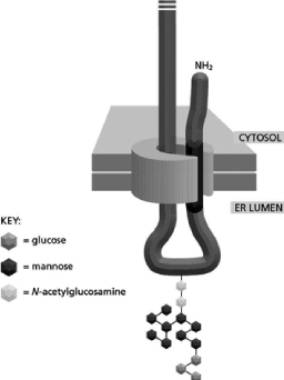Cells have oligosaccharides displayed on their cell surface that are important for cell-cell recognition.Your friend discovered a transmembrane glycoprotein, GP1, on a pathogenic yeast cell that is recognized by human immune cells.He decides to purify large amounts of GP1 by expressing it in bacteria.To his purified protein he then adds a branched 14-sugar oligosaccharide to the asparagine of the only Asn-X-Ser sequence found on GP1 (Figure 15-32) .Unfortunately, immune cells do not seem to recognize this synthesized glycoprotein.Which of the following statements is a likely explanation for this problem?  Figure 15-32
Figure 15-32
A) The oligosaccharide should have been added to the serine instead of the asparagine.
B) The oligosaccharide should have been added one sugar at a time.
C) The oligosaccharide needs to be further modified before it is mature.
D) The oligosaccharide needs a disulfide bond.
Correct Answer:
Verified
Q16: Which of the following statements about peroxisomes
Q17: Which of the following statements is TRUE?
A)The
Q18: Proteins that are fully translated in the
Q19: Where are chloroplast proteins translated?
A)in the cytosol
B)in
Q20: A large protein that passes through the
Q22: Which of the following statements about the
Q23: Which of the following protein families are
Q24: Figure 15-22 shows the organization of a
Q25: Your friend has just joined a lab
Q26: Which of the following statements about the
Unlock this Answer For Free Now!
View this answer and more for free by performing one of the following actions

Scan the QR code to install the App and get 2 free unlocks

Unlock quizzes for free by uploading documents